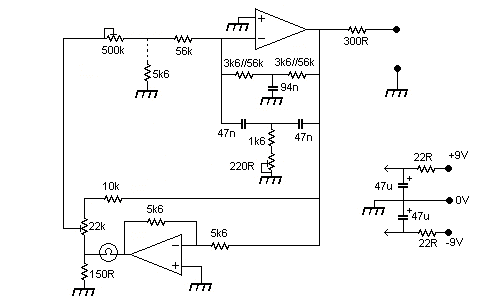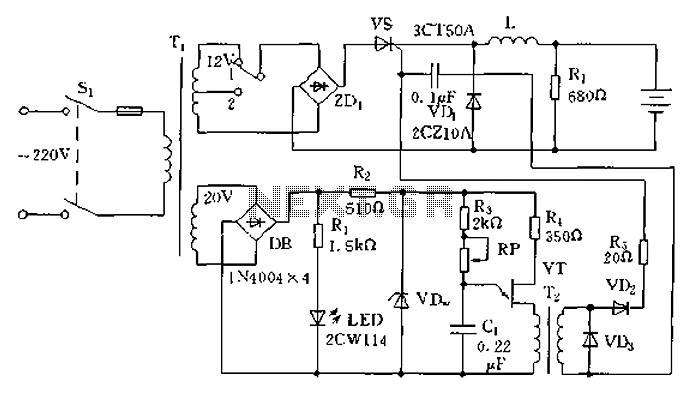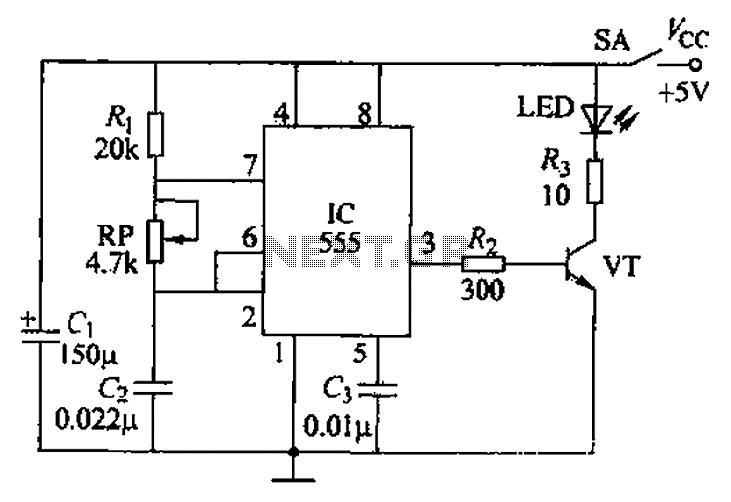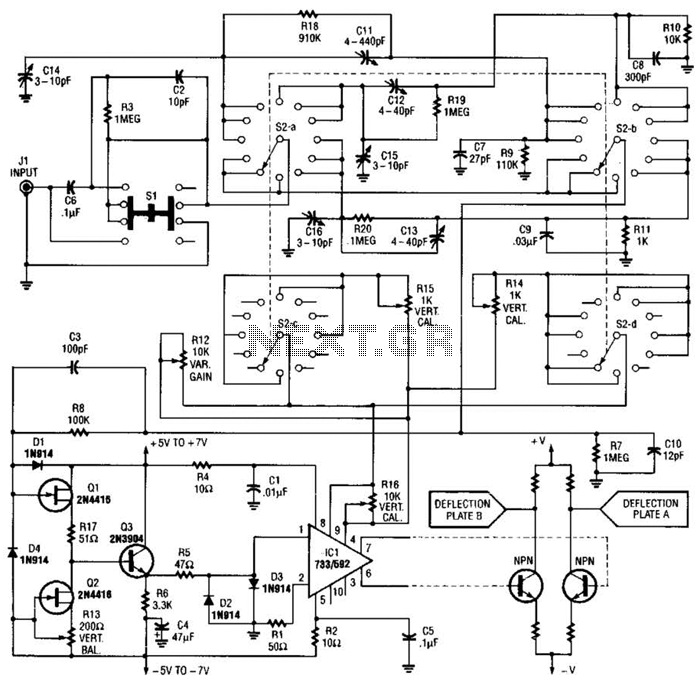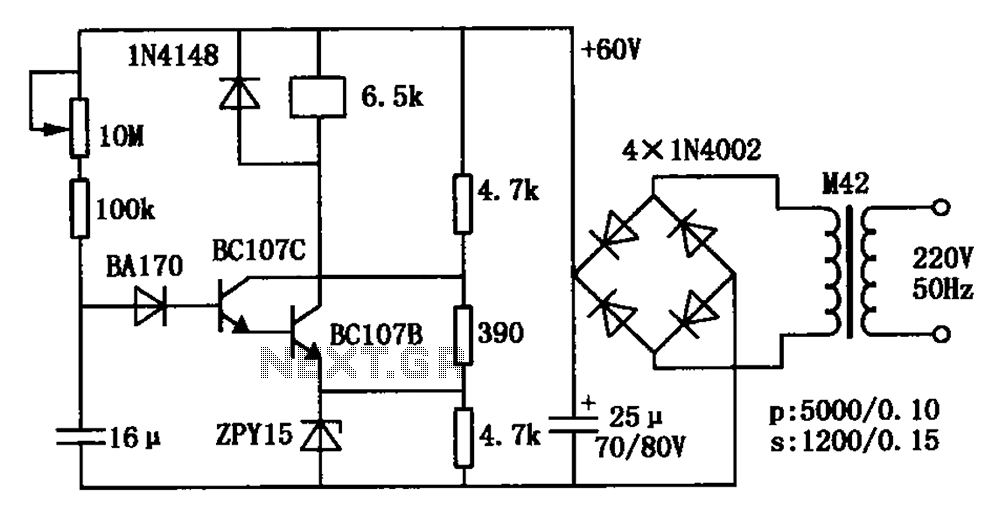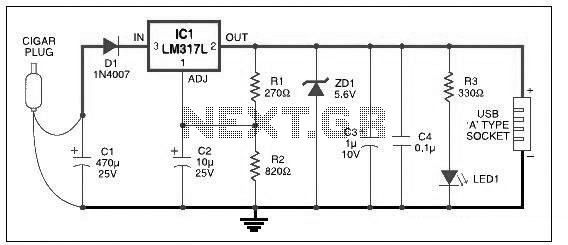
Color display circuit
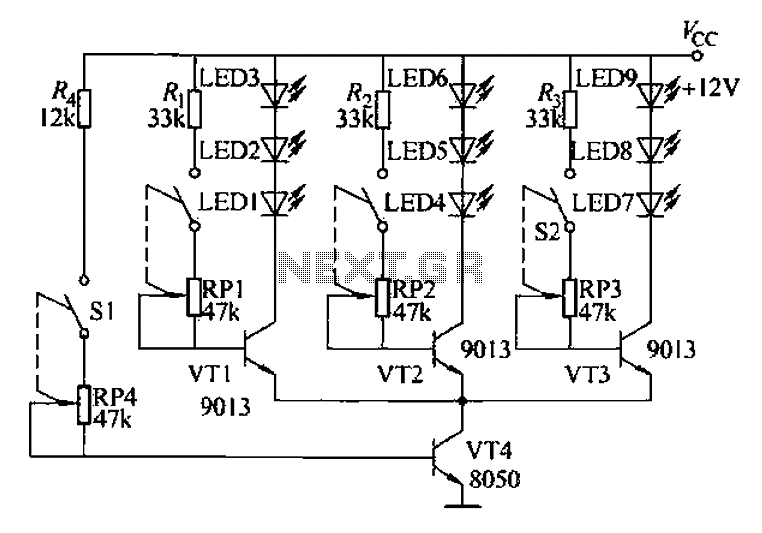
The circuit is designed to facilitate the teaching of color synthesis principles in color television, allowing students to better understand the concept through visual aids. It effectively reproduces color signals, thus simplifying the abstract nature of color synthesis. The working principle of the circuit, as depicted in the accompanying figure, is based on a light-emitting diode (LED) color synthesis circuit used in TV imaging. The circuit includes a driving circuit for red light-emitting diodes (LEDs), consisting of ultra-high brightness red LEDs with operating currents ranging from 0 to 30 mA, adjustable based on the characteristics of the LEDs. The circuit features a base bias resistor (R) and an adjustable resistor (RP1) for the transistor (VT1), allowing for the modulation of the current flowing through the red LEDs, which in turn alters their luminance. Additionally, the circuit includes driving circuits for green (VT2) and blue (VT3) LEDs, with a light adjustment circuit (VT4). The base bias circuit for VT4 is composed of resistors R4 and RP4, where adjusting RP4 modifies the collector current of VT4, thus affecting the current through the red, green, and blue LEDs, and consequently altering the brightness of each color channel.
The circuit utilizes a series of transistors to control the brightness of red, green, and blue LEDs, which together create a full spectrum of colors through additive color mixing. The transistors (VT1, VT2, VT3) serve as switches that regulate the current flowing to each LED. The adjustment of the base bias resistors (RP1 and RP4) allows for fine-tuning of the LED brightness, enabling the educator to demonstrate the effects of varying color intensities and the resulting color combinations.
In practical applications, the circuit can be integrated into educational setups where students can interactively learn about color synthesis. By adjusting the resistors, they can observe firsthand how changes in the current affect the brightness of each LED, thereby gaining a deeper understanding of how colors are synthesized in color television technology. This hands-on approach not only enhances learning but also demystifies the technical aspects of color reproduction in electronic displays. Overall, the circuit serves as a valuable educational tool, bridging theoretical concepts with practical demonstrations in the field of electronics and color science. Colour in teaching, in order to allow students to understand the principle of color TV color synthesis. This circuit can be beneficial to use visual teaching, realistic reprodu ction of color signals received good teaching. Thus breaking the color synthesis abstraction. (1) Working principle of the circuit shown in Fig. It is away from the circuit according to the TV imaging using light emitting diode color synthesis circuit. FIG VT1 red light emitting diode driving circuit, VD1 ~ VD3 ultra-high brightness red LED, operating current is provided in terms of o ~ 30mA (depending on the characteristics of the light emitting diode may be), R., RP1 is VT1 base bias resistor, adjusting RP1, can change the flow through the light emitting diode operating current can be changed by a red LED diode emission luminance.
VT2 green light emitting diode driving road. VT3 for the blue light-emitting diode driving circuit, VT4 as a light adjustment circuit. R4, RP4 for the VT4 base bias circuit. RP4 adjustment (ie adjustment of VT4 collector current), you can change the flow through the red, green and blue light-emitting tube current and, therefore, changes the three color brightness light-emitting tube.
The circuit utilizes a series of transistors to control the brightness of red, green, and blue LEDs, which together create a full spectrum of colors through additive color mixing. The transistors (VT1, VT2, VT3) serve as switches that regulate the current flowing to each LED. The adjustment of the base bias resistors (RP1 and RP4) allows for fine-tuning of the LED brightness, enabling the educator to demonstrate the effects of varying color intensities and the resulting color combinations.
In practical applications, the circuit can be integrated into educational setups where students can interactively learn about color synthesis. By adjusting the resistors, they can observe firsthand how changes in the current affect the brightness of each LED, thereby gaining a deeper understanding of how colors are synthesized in color television technology. This hands-on approach not only enhances learning but also demystifies the technical aspects of color reproduction in electronic displays. Overall, the circuit serves as a valuable educational tool, bridging theoretical concepts with practical demonstrations in the field of electronics and color science. Colour in teaching, in order to allow students to understand the principle of color TV color synthesis. This circuit can be beneficial to use visual teaching, realistic reprodu ction of color signals received good teaching. Thus breaking the color synthesis abstraction. (1) Working principle of the circuit shown in Fig. It is away from the circuit according to the TV imaging using light emitting diode color synthesis circuit. FIG VT1 red light emitting diode driving circuit, VD1 ~ VD3 ultra-high brightness red LED, operating current is provided in terms of o ~ 30mA (depending on the characteristics of the light emitting diode may be), R., RP1 is VT1 base bias resistor, adjusting RP1, can change the flow through the light emitting diode operating current can be changed by a red LED diode emission luminance.
VT2 green light emitting diode driving road. VT3 for the blue light-emitting diode driving circuit, VT4 as a light adjustment circuit. R4, RP4 for the VT4 base bias circuit. RP4 adjustment (ie adjustment of VT4 collector current), you can change the flow through the red, green and blue light-emitting tube current and, therefore, changes the three color brightness light-emitting tube.
